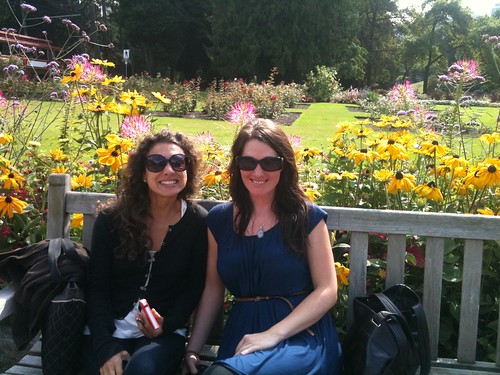Chypre Week 2011
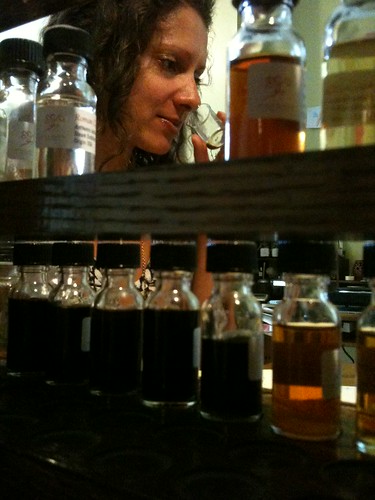
The past few week were consumed entirely by big projects such as the week long Chypre course (September 19-23) at the studio (and a few other events and projects about which I will tell you in my next posts). I like to start my week with a nature walk, so that students have a direct connection to plants, their aroma, and the many inspirations that come from the rich and beautiful natural world and how they impact all the senses - visual, tactile, olfactory and even the sounds of nature are a strong part of my creative process and I like to pass that passion on to them. Besides, it's always been the students' favourite part of my classes - going out to nature and seeking inspiration, using the techniques they learned int he lab to find, assess, evaluate and analyze scents in real life.
We walked down Robson street towards Stanley Park, where we stumbled upon a rockrose bush, and noticed the smell of it, reminiscent of the cistus oil and labdanum absolutes we encountered in the class (it's probably a different species though, and not as fragrant as the ones growing in the Mediterranean region...).
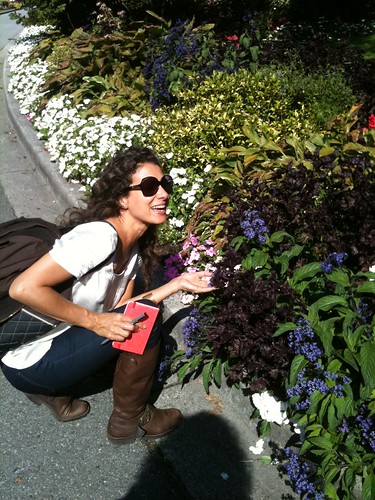
When we arrived at the Rose Garden in Stanley Park, we were surprised by the beautiful pairing of purplse shiso and heliotrope flowers next to each other. Both are visually appealing with their purples and deep red, and have amazing smells: purple shiso smells practically like a perfume all of its own - very fragrant, floral more than herbaceous, and with a very fruity-aldehydic top notes. Heliotrope smells like piperonal (heliotropin) - which most of us associate with either marzipan or playdoh!


Then, with our noses up in the air, we proceeded to the South Creek trail in Stanley Park (which connects the Rose Garden to Beaver Lake, amidst the rain forest) - in search for the naturally-occuring sweet Chypre smell of forest undergrowth in fall... Its' a challenge to find that scent in the air, and even more so to pin point its source, but it is there, awaiting those who listen with their noses. It was an exercise in focus, refreshing our olfactory bulb, being open to new and unfamiliar smells in a rather moist and cold environment (aka: not ideal for discerning smells too readily). At some point, we had to close our eyes and go through the path to find that sweet smell of fallen fir needles, red cedar, moss, lichen and rainforest floor...

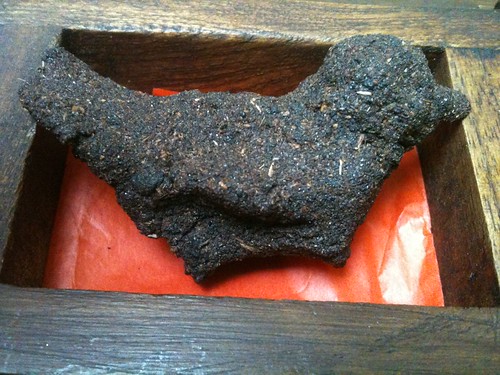
Our first session in the lab was dedicated to trying to make Oyselets d e Chypre. I searched in vein for an authentic formula or recipe, so I thought I'll use the opportunity to teach my students how to try to make their own experiments based on the recipe I had for incense cones, but using a different gum to bind them (Gum Arabic, rather than the very costly Makko powder - as we had no intention of using these for incense burning, but rather as sculpted potpourri).
We all ended up with sticky hands, fragrant with sage, cassia and labdanum... And with results that were even stickier and had to be left alone to dry for at least a week. Once the water evaporated, these ended up smelling very Chypre-like, in a most authentic meaning of the word - smelling of labdanum and Mediterranean herbs. Warm and lovely.
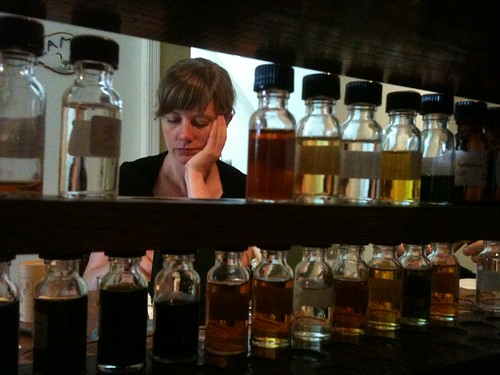
In the next lab session was dedicated to creating a chypre accord solid perfume. And in the last two days we created chypres in alcohol base, first from a given formula, and than manipulating it into different sub categories from the Chypre families inspired by the forest walk (i.e.: a coniferous chypre or green chypre) or by classic perfumes that the students analyzed in class (i.e.: a fruity chypre inspired by Femme, woody chypre like Mitsouko, etc. ).

Throughout the week, students were given lectures about the history of Chypres, learned about the many subcategories of the Chypre fragrance families with examples both from classic perfumes as well as all-natural perfumes from Ayala Moriel's line to demonstrate how this family can be represented using only natural fragrances. And every morning began with blind-scent-ID-games and studying the raw materials (olfaction and characteristics of each note and a bit of history of the plant as well as the main chemical constituents).
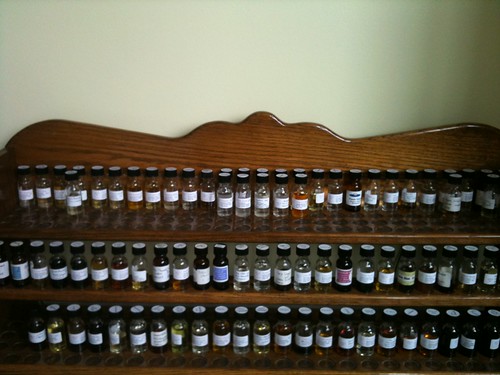
The next intensive week in Ayala Moriel's Foundation of Natural Perfumery course will take place in January 16-20, 2012, and will focus on the Fougere fragrance family. We have limited number of spaces for new students, who will be required to send in a CV with a coverletter to get accepted to the program, as well as enroll in the Perfumery Lab 101 a 2 day lab prep course prior to that week - scheduled for January 11 & 12th (9:00am-3:30pm) and January 13th (9:00am-1:00pm). To apply please email your CV and cover letter to ayala (at) ayalamoriel.com.
